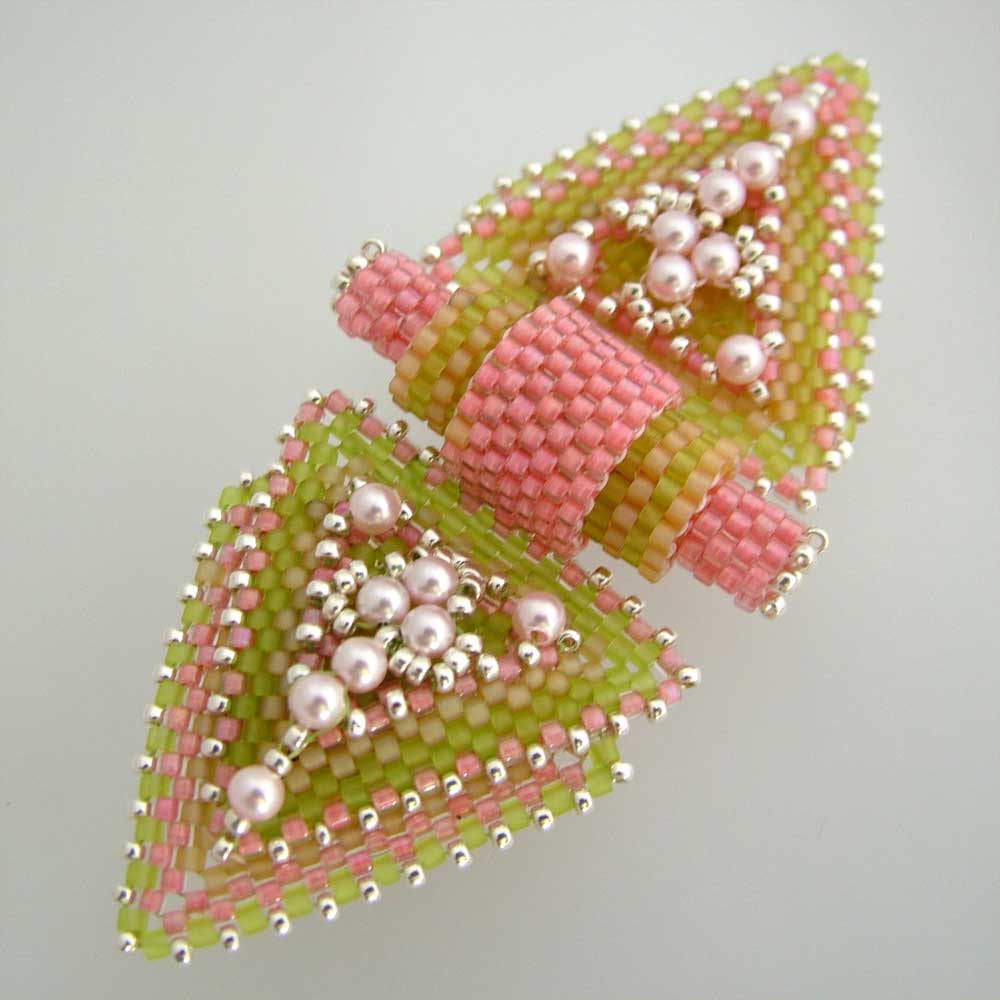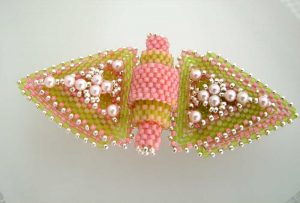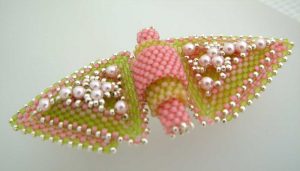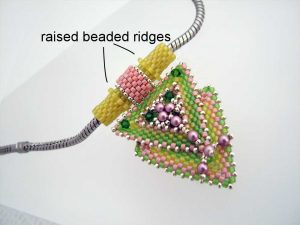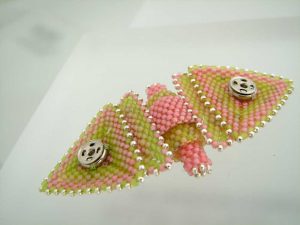Butterfly Clasp – beautiful, beaded, and snap-on. A very versatile clasp that has a hinge on it. The construction of this clasp also lends itself to various possibilities and uses.
Source Credit: Heather Collin is the original designer of the Butterfly Clasp. You might want to check out her Etsy store. The name “Butterfly Snap-on Clasp” is the name given by Heather for her useful and clear tutorial.
Here I am just making some overview notes on the construct of this clasp and how I managed to play around to produce some interesting variations.
Here are some photos of the clasp I made, based on Heather’s tutorial.
Butterfly Clasp – Overview DIY Notes
This overview contains some observations on the basic construct of the Butterfly Clasp. Note that in the examples below, you can also see how this clasp has been turned into a pendant.
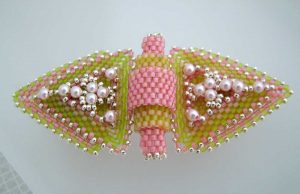 Each triangular side is worked first. Each side consists of 2 triangles, sewn one on top of the other with a bit of an offset.
Each triangular side is worked first. Each side consists of 2 triangles, sewn one on top of the other with a bit of an offset.
- Each triangle starts from the center, and work is done in Peyote stitch. The corners (except the last edge row) has one extra bead to accommodate the turning.
- The other side’s triangle is done to match.
- Then the hinge-tubes are made – also from odd-numbered peyote stitch.
- The innermost and thinnest tube is made first.
- According to the tutorial, each tube/cylinder more or less stays in place from friction arising from the tight fit of the tubes. However I found that this did not give me enough (mental) security so I made a variation where all 3 tubes were made in one continuous weaving, so that there was not going to be any chance the tubes slipping out of place. The example below is done this way.
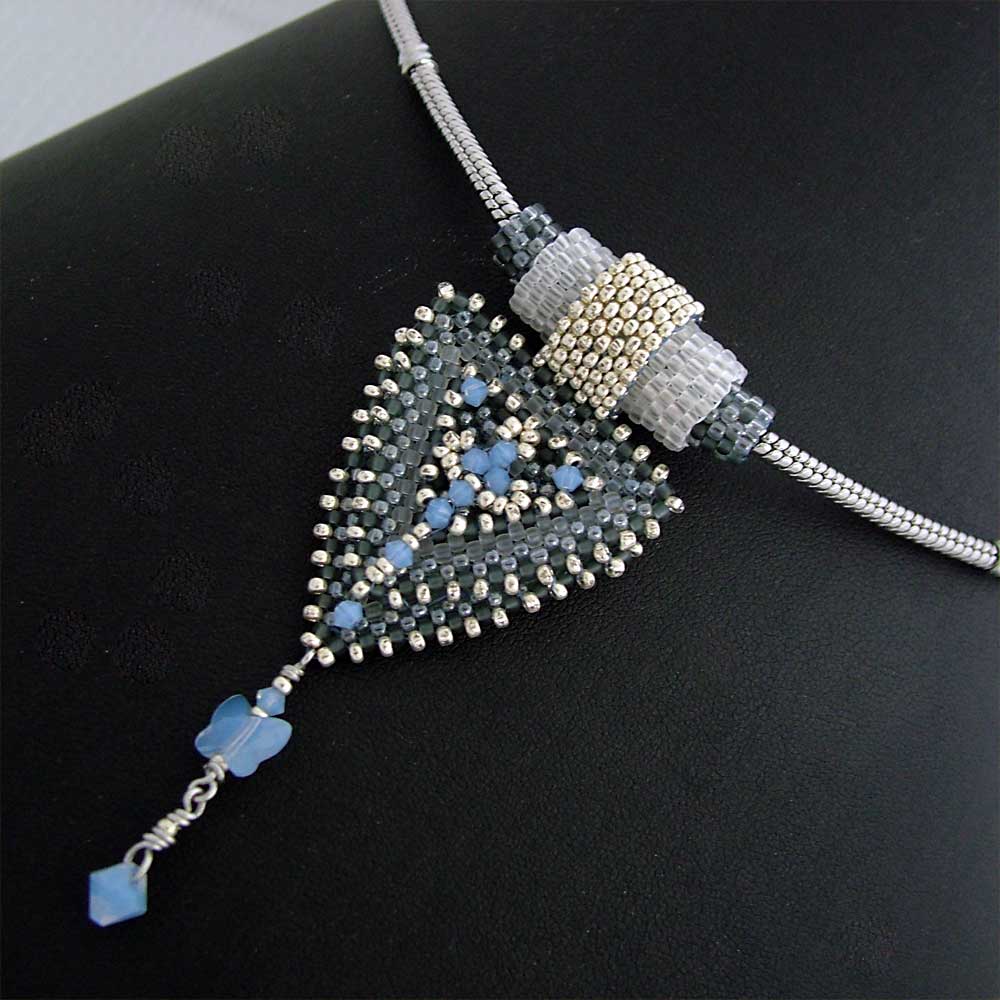
I made another variation that had a dab of glue to hold each tube in position.
But the variation I like the best is by creating 2 rows of raised (beaded) ridges on the inner tube, then zipping up the outer tube so that it would sit between the 2 rows of ridges. The ridge ensures that the tubes stay in place over time while in use. This, to me, is the “cleanest” construct and no glue and messy stuff required.
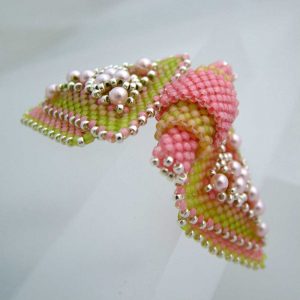 The center tubes form a “hinge” so that both sides of the clasp-flaps are flexible – which is very useful a feature in clasps.
The center tubes form a “hinge” so that both sides of the clasp-flaps are flexible – which is very useful a feature in clasps.
This photo here shows the flipside of the clasp. Which shows how the snap on of this clasp works.
You can find the original Butterfly Clasp tutorial by Heather Collin over at her etsy store.
